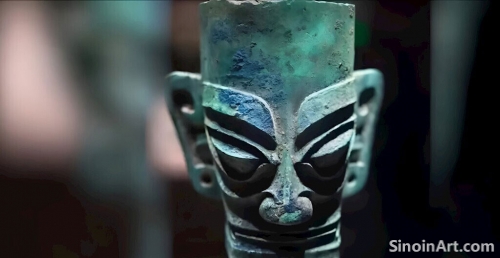The Influence of Ancient Chinese Bronze Ware on Later Korean Art and Design
|
The artistic traditions of ancient China, including the production of bronze ware, had a lasting and profound influence on the development of Korean art and design, with Korean artists and craftspeople adapting and reinterpreting Chinese styles and techniques in unique and distinctive ways, and creating their own forms of artistic expression. The interaction between these two cultures had a lasting and important impact on both.  Korean bronze ware, while often inspired by Chinese prototypes, also developed its own characteristic styles, with distinct forms, designs, and decorative motifs. The blend of Chinese influence with local artistic traditions helped to create a unique Korean approach to metalworking.  The adoption of Chinese ritual practices in Korea also led to the creation of bronze vessels and instruments that were often adapted to suit the specific religious and cultural traditions of the region. The influence of Chinese ritual practice helped to define the types and styles of objects that were produced in Korea.  Korean artists also explored and expanded on some of the techniques and methods that had their origins in Chinese bronze production, adapting them to new materials and new forms, and highlighting a willingness to experiment with new approaches and new design techniques. The careful study and adaptation of these techniques helped to create new possibilities and further define Korean approaches to art and craft. The study of bronze ware in Korea provides a unique perspective on the process of cultural exchange and adaptation, and it reveals how artistic traditions can be both preserved and also transformed in new and creative ways. The legacy of Chinese influence on Korean art demonstrates the complex interplay of cross-cultural exchange and the creation of truly unique and compelling artistic styles. |
Tag : Korean bronze art, Chinese influence, cultural exchange, ancient designs, Korean metalworking
Related information
- The Influence of Bronze Ware on Ancient Chinese Clothing and Adornment: Jewelry, Belt Hooks, and Ornaments
- Bronze Ware and the Development of Ancient Chinese Ceramics: Form and Decoration
- Bronze Vessels and Music Performance in Ancient China: A Multi-Sensory Experience
- Bronze Ware and the Power of Inscriptions: Communicating History, Lineage, and Identity
- Bronze Ware as Grave Goods: Status, Belief, and the Afterlife
This article explores the use of bronze in ancient Chinese clothing and adornment, highlighting the creation of jewelry, belt hooks, buckles, and other decorative elements, and demonstrating the integration of art, fashion, and social expression.
This article explores the influence of bronze ware on the development of ancient Chinese ceramics, highlighting the replication of bronze forms and decorative patterns, the adaptation of metalworking techniques, and demonstrating the cross-pollination of these two art forms.
This article explores the combination of bronze vessels and music in ancient Chinese ritual performance, highlighting how these combined to create a multi-sensory experience that engaged both visual and auditory senses, and enhanced the power of ritualistic ceremonies.
This article explores the power of inscriptions on Chinese bronze ware, highlighting how they communicated historical events, established lineage ties, asserted social identities, and provided invaluable insights into the history and culture of ancient China.
This article explores the use of bronze ware as grave goods in ancient China, highlighting its connection to beliefs about the afterlife, the social status reflected in the types and quantities of objects, and how the placement of these objects reveals insights into ritualistic practices.